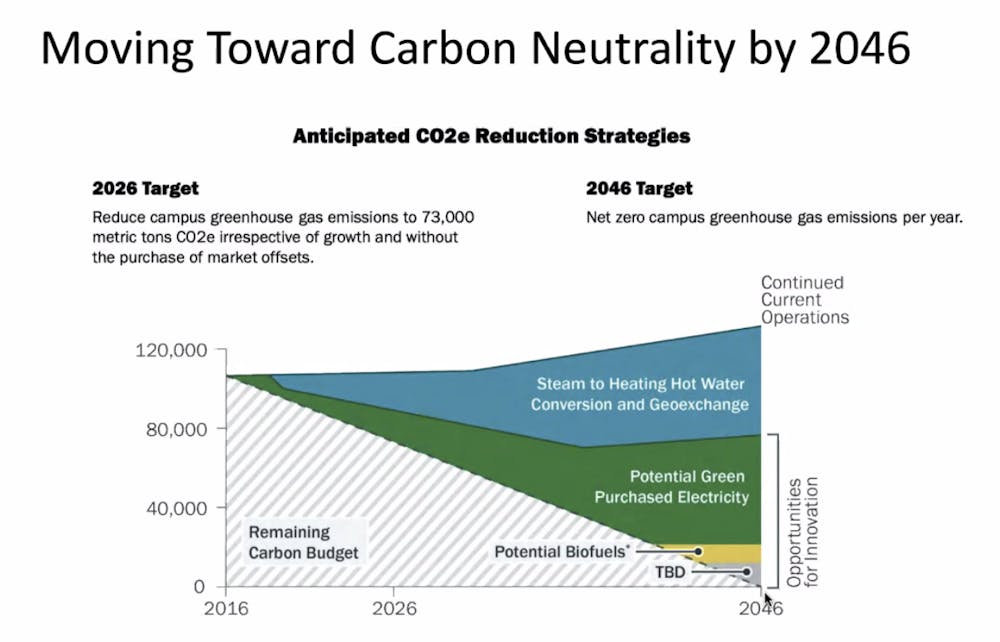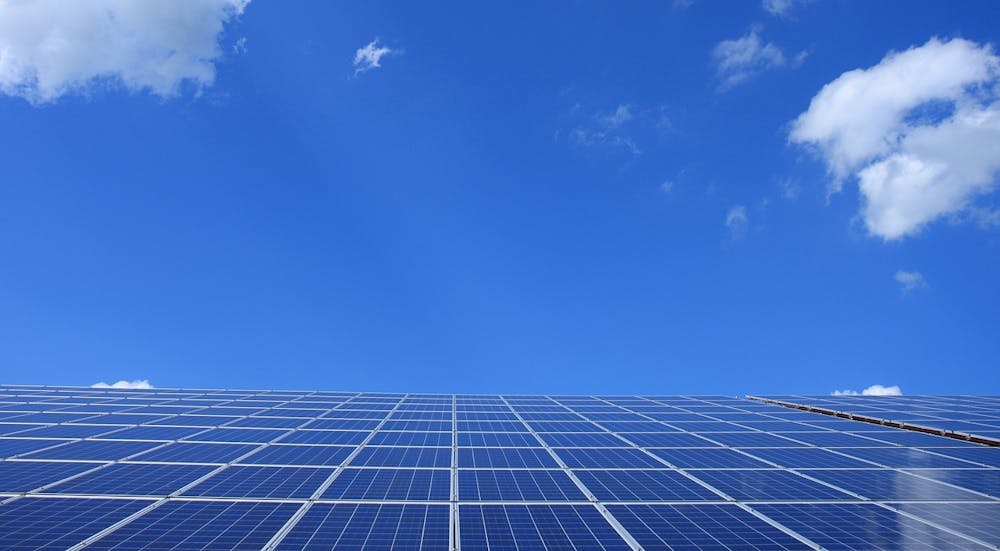Eight new solar projects will soon be built on or around Princeton’s campus, according to the University’s Office of Sustainability. These expansions will support the University’s commitment to reach net-zero emissions by 2046.
The new installations will be located on three parking decks, three fields, a parking lot, and the roof of the High-Performance Computing Research Center (HPCRC), a building located at Princeton’s Forrestal Center in nearby Plainsboro. These arrays are designed to collect energy on both sides of the solar cells, “increasing their efficiency and energy yield.”
The University claims that the solar arrays will “more than triple the University’s current solar photovoltaic (PV) generating capacity,” increasing this capacity from 5.5 to 19 percent of current electric energy use. The total number of panels will also increase by more than 27,000, and the total photovoltaic capacity will rise from 4.5 to 16.5 megawatts.
The Office of Sustainability declined to comment on the logistics of the project, so it is not yet known when the project is set to be completed and what impact, if any, the solar installation construction may have on campus life.
Claire Wayner ’22, president emeritus of the Princeton Student Climate Initiative (PSCI), was excited to hear the news.
“It was pitiful to have less than 5 percent of our campus’ energy coming from solar, so this expansion is long overdue,” Wayner said. “Decarbonizing our campus will not be easy, so it is important for the University to take proactive action, which is exactly what they are doing here.”
Wayner is a former opinion columnist for The Daily Princetonian.
The projects will be designed, built, and owned by EDF Renewables, a French renewable energy company, for 15 years through a “power purchase agreement.” After this period, the University will have the ability to purchase the installations at “fair market value” and manage them independently for a predicted 10-15 additional years, according to the Office of Sustainability release.

EDF Renewables, headquartered in Paris, has been a major player in the renewable energy industry since 2004. They operate in close to 20 countries and provide solutions for onshore and offshore wind and solar energy projects in both governmental and commercial functions.
The ‘Prince’ reached out to EDF for further details about the project, but the company did not respond to a request for comment.
In addition to the solar panels, the University has previously outlined other steps being taken to achieve carbon neutrality by 2046, which include geo-exchange technology for heating, raising renewable standards for new construction, and increasing efficiency for existing buildings.
At a recent Council of the Princeton University Community (CPUC) meeting, University architect Ron McCoy outlined how facilities like the Thermally Integrated Geo-Exchange Resource (TIGER) will contribute to the net-zero goal, in line with the University’s overarching climate plan.


A screenshot of University Architect Ron McCoy’s presentation during the Dec. 14 Council of the Princeton University Community (CPUC) meeting.
In 2019, total campus emissions still exceeded 112,000 metric tons of CO2 according to the Office of Sustainability, meaning an average annual decrease of more than 4,100 tons is needed to meet the net-zero target.








